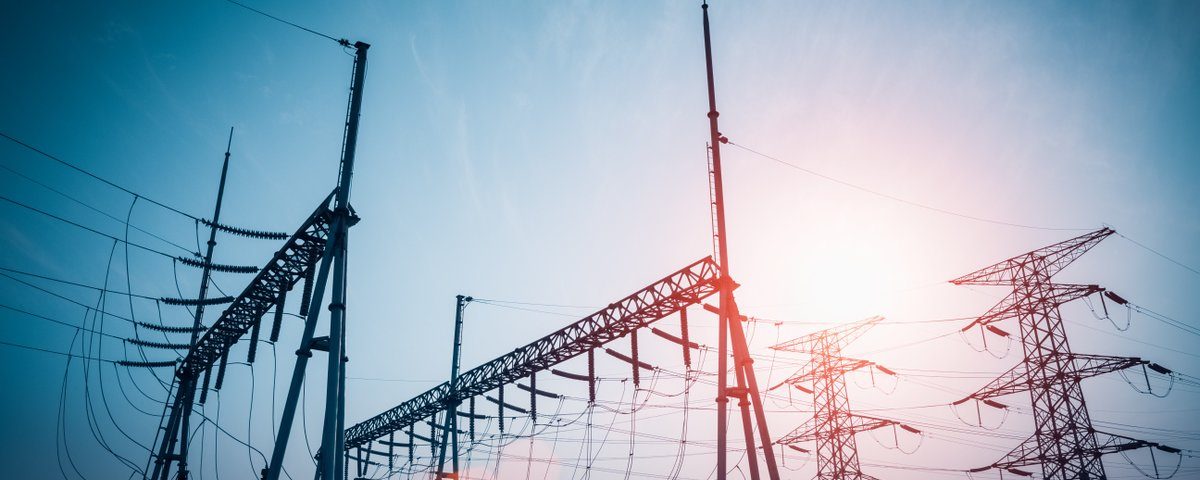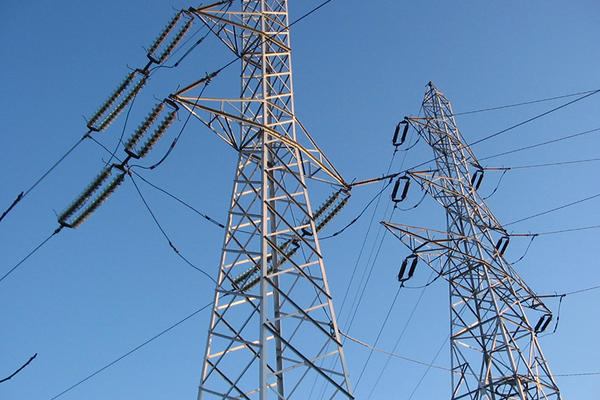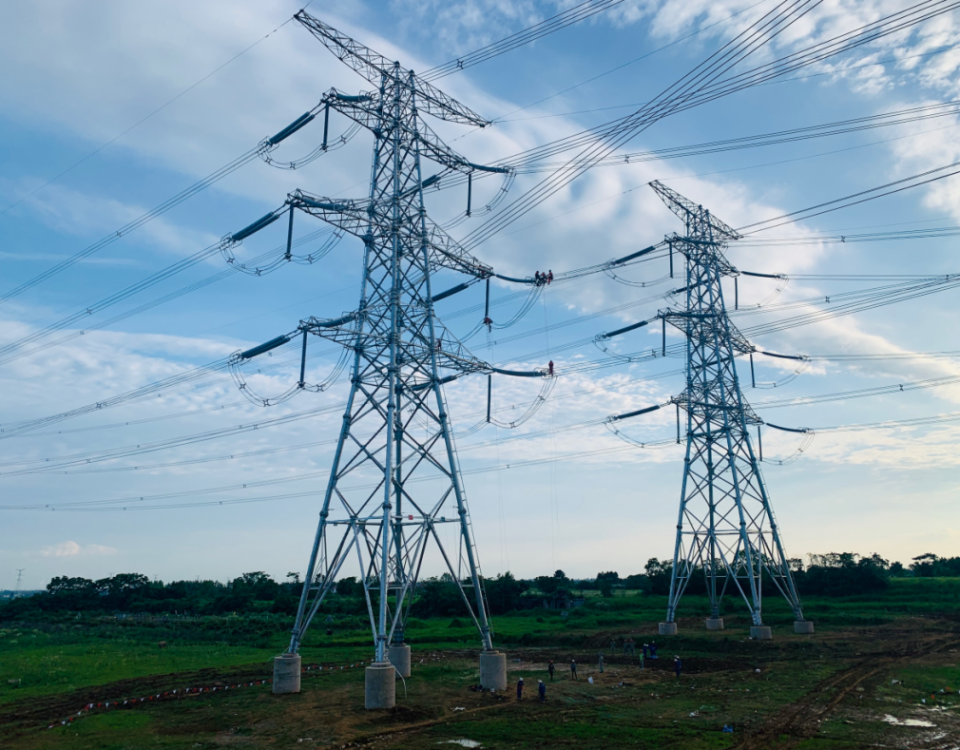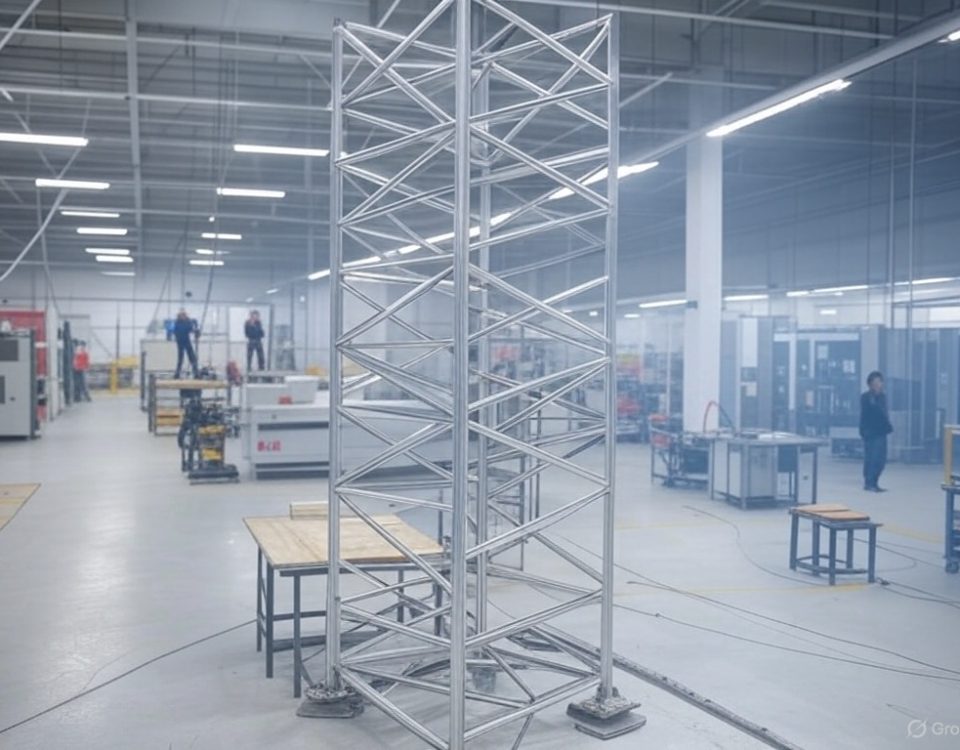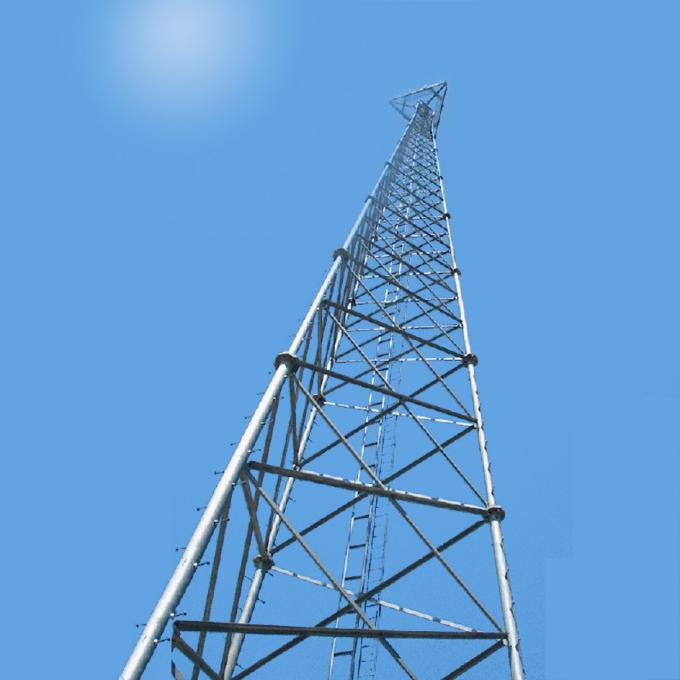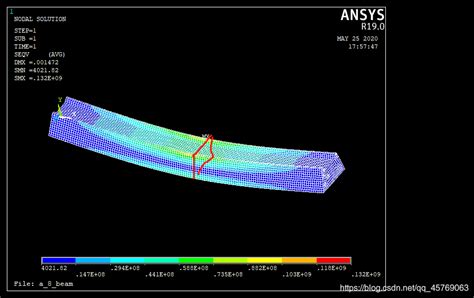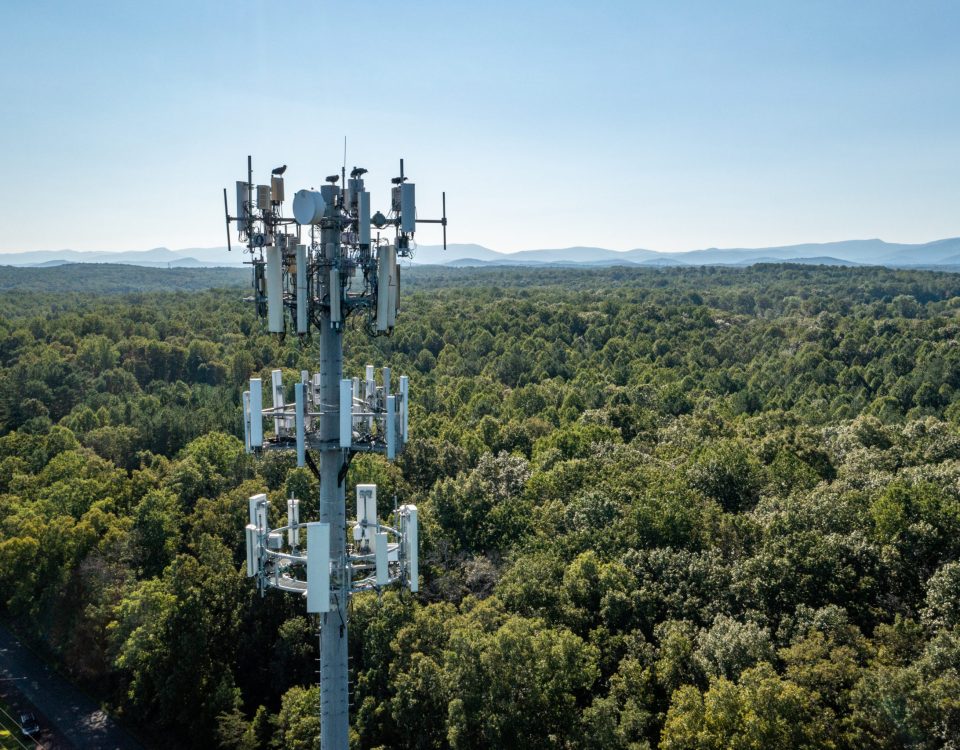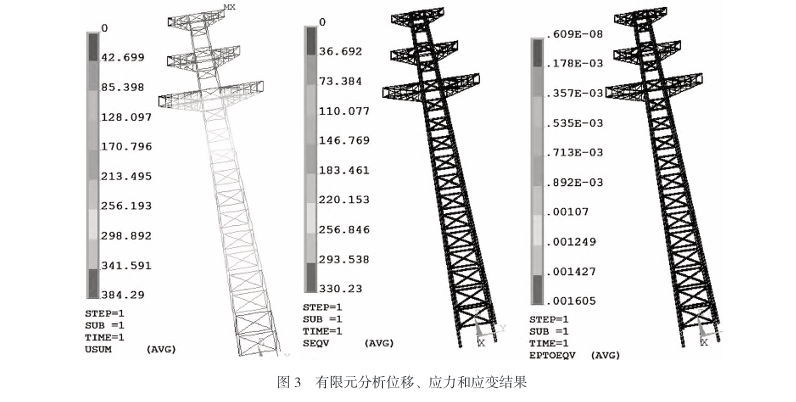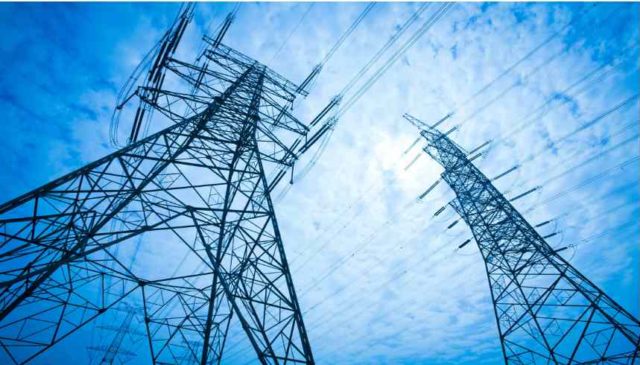
Transmission line tower structural design Analysis
June 9, 2024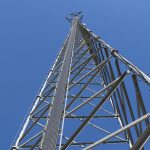
Steel Lattice Cellular Tower Seismic Fragilities
June 17, 2024Analysis of Transmission Line Tower Subjected to Wind Loading
Analysis of Transmission Line Tower Subjected to Wind Loading
Transmission line towers are vital for the functioning of electrical grids, as they support overhead power lines that transmit electricity over long distances. Designing these towers involves ensuring they can withstand various environmental loads, with wind loading being one of the most critical. Wind loads can cause significant forces and moments on the tower structure, potentially leading to structural failure if not properly accounted for. This comprehensive analysis will explore the theoretical background, design considerations, and practical approaches for analyzing transmission line towers under wind loading.
1. Introduction to Wind Loading on Transmission Line Towers
Wind loading on transmission line towers is a critical factor in their design and analysis. The wind exerts forces on the tower components, which must be evaluated to ensure structural integrity and serviceability. Wind loads vary with wind speed, direction, tower height, and geographical location, making the analysis complex.
Transmission line towers are typically tall, slender structures that can be significantly affected by wind forces. These towers must be designed to resist both static and dynamic wind loads, ensuring stability and safety throughout their service life.
2. Fundamentals of Wind Loading
Understanding wind loading involves grasping the basic principles of wind pressure and how it interacts with structures. The wind pressure on a structure can be expressed as:
=0.5⋅⋅2⋅⋅P=0.5⋅ρ⋅V2⋅Cd⋅A
Where:
- P = Wind pressure
- ρ = Air density (typically 1.225 kg/m³ at sea level)
- V = Wind velocity
- Cd = Drag coefficient
- A = Projected area of the structure
Wind velocity (V) is a critical parameter, often measured at a reference height and adjusted for the actual height of the structure using appropriate profiles.
3. Design Wind Speed
The design wind speed is determined based on:
- Geographic Location: Wind speed data from weather stations, often given for different return periods (e.g., 50 years, 100 years).
- Terrain Roughness: The roughness of the terrain affects wind speed profiles. Open terrain and urban areas have different profiles.
- Height Above Ground: Wind speed increases with height, and this variation is described by wind speed profiles or exposure categories.
Standards such as ASCE 7 and IEC 60826 provide guidelines for determining design wind speeds based on these factors.
4. Aerodynamic Characteristics
Transmission line towers, typically lattice structures, have specific aerodynamic characteristics. The drag coefficient (Cd) depends on the shape and orientation of the tower members. Lattice towers usually have lower drag coefficients compared to solid structures due to their open framework, which allows wind to pass through.
5. Static and Dynamic Wind Loads
Wind loads can be classified into static and dynamic components:
- Static Wind Load: The steady-state wind pressure acting on the structure.
- Dynamic Wind Load: Caused by wind gusts and turbulence, leading to fluctuating forces.
Dynamic wind loads can induce vibrations in the structure, which must be carefully analyzed to avoid resonance and fatigue.
6. Structural Analysis
The structural analysis of a transmission line tower under wind loading involves several steps:
6.1 Modeling the Tower
Creating a detailed 3D model of the tower using software like SAP2000, ANSYS, or STAAD.Pro. The model includes all structural elements, joints, and connections.
6.2 Load Application
Applying wind loads to the model involves:
- Static Analysis: Applying the calculated wind pressure as static loads on the structure.
- Dynamic Analysis: Considering the fluctuating nature of wind loads, often using wind spectra or time-history analysis.
6.3 Finite Element Analysis (FEA)
Finite Element Analysis (FEA) is used to evaluate the stress distribution, deformations, and stability of the tower under wind loads. FEA provides detailed insights into the structural response, identifying critical areas and potential failure points.
7. Dynamic Effects and Vibration Analysis
Dynamic effects are crucial in wind load analysis, as wind-induced vibrations can lead to structural fatigue and failure. This includes:
- Natural Frequency Analysis: Ensuring the tower’s natural frequencies do not coincide with the frequencies of wind gusts.
- Damping Mechanisms: Incorporating damping devices (e.g., tuned mass dampers) to reduce vibrations.
8. Member Design and Sizing
Each structural member must be designed to withstand the maximum expected wind loads without buckling or yielding. This involves:
- Section Properties: Choosing appropriate cross-sectional shapes and sizes.
- Material Selection: Using materials with adequate strength and durability.
- Connection Design: Ensuring connections can transfer loads effectively without failure.
9. Foundation Design (Continued)
The foundation of a transmission line tower must be designed to provide adequate stability against the forces and moments induced by wind loading. Key considerations include:
- Soil Properties: Conducting geotechnical investigations to determine the bearing capacity and shear strength of the soil.
- Foundation Type: Choosing the appropriate foundation type (e.g., shallow foundations, pile foundations) based on soil conditions and load requirements.
- Overturning and Sliding Resistance: Ensuring the foundation can resist the overturning moment and sliding forces. This may involve increasing the foundation depth, using larger footings, or adding anchors.
- Load Distribution: Ensuring loads are evenly distributed to prevent differential settlement.
10. Code Compliance
Transmission line towers must comply with relevant national and international codes and standards. These standards provide guidelines for wind load calculations, structural design, and safety factors. Some common standards include:
- ASCE 7-22: “Minimum Design Loads and Associated Criteria for Buildings and Other Structures” by the American Society of Civil Engineers.
- IEC 60826: “Design Criteria of Overhead Transmission Lines” by the International Electrotechnical Commission.
- Eurocode EN 1991-1-4: “Actions on Structures – Wind Actions” by the European Committee for Standardization.
11. Safety Factors
Safety factors are applied to account for uncertainties in wind load predictions, material properties, and construction quality. These factors ensure that the structure remains safe under extreme conditions. Typical safety factors include:
- Load Factors: Applied to wind loads to cover uncertainties in wind speed data and aerodynamic effects.
- Material Factors: Applied to material strengths to account for variability in material properties and manufacturing processes.
- Combination Factors: Used when combining different types of loads (e.g., wind, dead loads, live loads) to ensure conservative design.
12. Case Study: Wind Load Analysis of a Transmission Line Tower
To illustrate the analysis process, let’s consider a case study of a transmission line tower subjected to wind loading.
12.1 Tower Description
- Height: 50 meters
- Type: Lattice steel tower
- Location: Coastal area with high wind speeds
- Design Wind Speed: 45 m/s (based on local wind speed data and return period)
12.2 Wind Load Calculation
Using the formula for wind pressure:
=0.5⋅⋅2⋅⋅P=0.5⋅ρ⋅V2⋅Cd⋅A
Assuming:
- Air density (ρ) = 1.225 kg/m³
- Drag coefficient (Cd) = 1.2 (for lattice structures)
- Wind speed (V) = 45 m/s
The wind pressure at the top of the tower is:
=0.5⋅1.225⋅(45)2⋅1.2P=0.5⋅1.225⋅(45)2⋅1.2
≈1484 N/m2P≈1484 N/m2
12.3 Structural Modeling and Analysis
- Modeling: A 3D model of the tower is created using finite element software.
- Load Application: Wind loads are applied as static pressures on the tower members.
- Dynamic Analysis: Wind-induced vibrations are analyzed using time-history analysis and spectral methods.
12.4 Results and Discussion
- Stress Distribution: The FEA results show high-stress concentrations at the joints and bracing members.
- Deformation: The tower exhibits maximum deflection at the top, within acceptable limits.
- Natural Frequencies: The natural frequency analysis indicates no resonance issues with expected wind gust frequencies.
- Foundation Stability: The foundation design is validated to resist overturning and sliding forces.
13. Advanced Considerations
13.1 Wind Tunnel Testing
For critical projects, wind tunnel testing can provide more accurate data on wind pressures and aerodynamic behavior. Scale models of the tower are tested under controlled wind conditions to measure forces and moments.
13.2 Computational Fluid Dynamics (CFD)
CFD simulations offer detailed insights into wind flow patterns around the tower. These simulations help identify areas of high wind pressure and potential aerodynamic improvements.
13.3 Fatigue Analysis
Repeated wind-induced vibrations can lead to fatigue failure in structural members. Fatigue analysis evaluates the cumulative damage over the expected service life, ensuring durability and reliability.
14. Conclusion
Analyzing transmission line towers under wind loading is a complex but essential task to ensure their safety and stability. The process involves understanding wind characteristics, calculating wind loads, modeling the structure, and conducting both static and dynamic analyses. Compliance with relevant codes and standards, along with the application of safety factors, ensures a conservative and reliable design. Advanced techniques like wind tunnel testing and CFD simulations provide additional insights for optimizing tower performance.
Related posts
The analysis of the bearing capacity of a power transmission line steel tower highlights the complexity and importance of structural and foundation design. By understanding the interplay of loads, material properties, and environmental factors, engineers can optimize tower performance and ensure reliability in power networks. Tables and case studies further illustrate best practices and design considerations.

